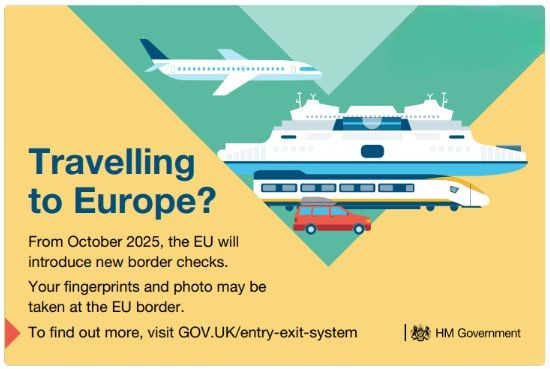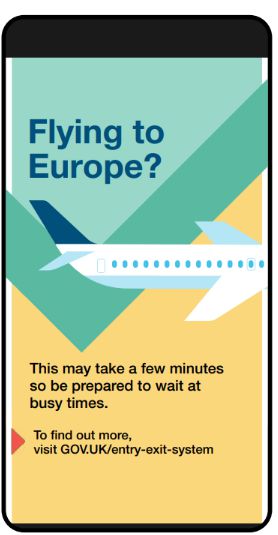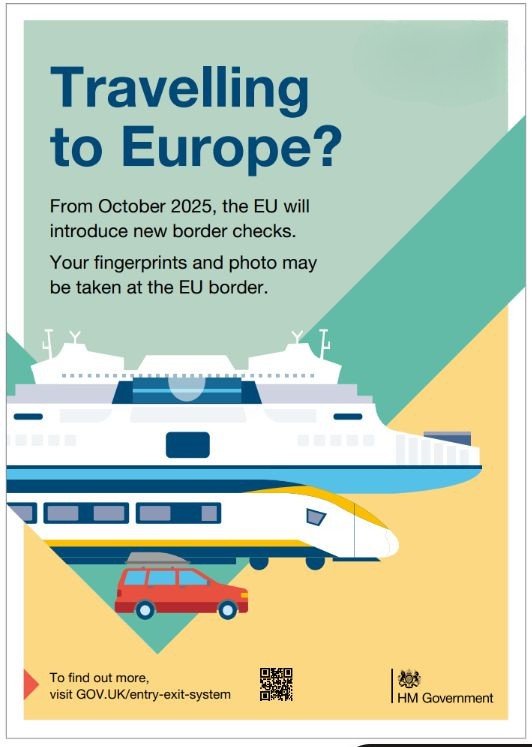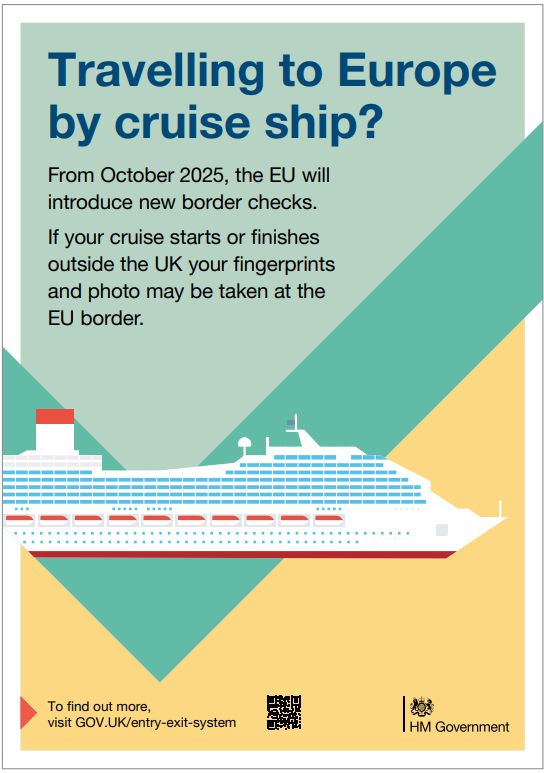EU Entry/Exit System (EES) made simple: what you need to know
I’ve been following the EU’s Entry/Exit System closely so you don’t have to. Here’s what it means in practice, in clear, reassuring terms, and how I keep your trip smooth from the UK. If you’re still deciding where to go, explore ideas on my destinations hub.

Official UK Government visual highlighting new EU border checks for all modes of travel
What is EES?

Biometric checks: scan, fingerprints and a quick photo
EES is the EU’s digital border system for non-EU visitors, including British passport holders. It replaces manual passport stamping with a quick scan and biometric checks at the border. These checks are completed in person at border control. There’s nothing to fill in online in advance. For official updates, see the UK Government foreign travel advice.
- I scan my passport.
- I have a photo taken.
- I give fingerprints at the border from age 12.
Who is affected, and who isn’t
EES applies to UK passport holders visiting the Schengen Area. All children complete EES; fingerprints are only from age 12+. It does not apply to British citizens legally resident in an EU country with the correct residence documentation. Cruise passengers on round-trip itineraries from the UK who only take day excursions are typically exempt. For trips that fit your travel style, browse my adventure types.
When it applies
EES is scheduled to start from 12 October 2025 with a phased roll-out over several months. Early on, experiences may vary between countries and border points. I’ll advise you on what to expect for your exact route and date. ABTA has a clear overview of the upcoming changes to European travel. Planning Europe? See my small group Europe trips for effortless, guided options.
.png)
What to expect at the border

Flying to Europe? Allow a few extra minutes for checks
- A little extra time: first-time EES checks can add a few minutes, especially at busy periods.
- Kiosks and questions: some borders use kiosks to ask standard Schengen questions about purpose, length of stay, accommodation, funds and travel insurance.
- Accessibility: border teams are briefed to support travellers with additional needs. Tell me if you’d like assistance noted on your booking.
Trains, ferries, self-drive and school groups

EES applies for ferry, Eurostar, Eurotunnel and self-drive
The same EES rules apply regardless of how you travel. At certain UK locations where French checks happen before departure (Dover, Folkestone, St Pancras), switching on may be later than airports. For school and youth groups, procedures are still being refined. I keep group leaders fully briefed on the latest steps and I’ll share tailored advice for your exact route and date. If you prefer company on the road, my small group & escorted tours are a relaxed way to travel.

Cruise travellers: EES applies if you disembark and continue travel in Europe, but not usually for UK round-trip day excursions
Regular visitors, second passports and the 90/180-day rule
- Use the same passport for every Schengen trip so the system recognises you.
- Your time limit remains 90 days in any rolling 180-day period. I can help you track this for complex or frequent travel.
- If you renew your passport, you’ll repeat quick checks to refresh your profile.
How I make it easy
- I confirm the current process for your exact route and dates.
- I build in smart flight times, connections and buffer time so travel stays effortless.
- I brief families, groups and travellers with additional needs so the process is smooth.
- For values-led trips, see how I plan low-stress, low-impact itineraries on my responsible travel page.
Curious how I work and why clients rebook with me? Visit Why book with me, and explore real feedback in my testimonials. Or head back to the homepage for the latest ideas.
.png)
Quick answers to common questions
Do I need to pay for EES?
No. EES is free and takes place at the border. If you see a request to pay now, it is not genuine. The paid EU system, ETIAS, is a separate online authorisation expected to launch later and is not required yet.
Does EES apply to children?
Yes. All children complete EES. Fingerprints are only taken from age 12. Parents or group leaders can help younger travellers with kiosk questions at the border. For tailored help, see my family and group-friendly tours.
What’s the difference between EES, ETIAS and the UK ETA?
EES is biometric checks at the EU border. ETIAS will be an online EU travel authorisation with a fee and multi-year validity, not live yet. The UK ETA is separate and applies to visitors entering the UK. I post updates on my blog.
Will EES cause delays?
First-time checks may add a few minutes, especially at busy times. Once details are recorded, future trips are usually quicker. I plan sensible buffer time and choose smart routes to keep travel smooth.
How do I track my 90/180 days?
There isn’t an official app. I can calculate your rolling 90 days in 180 for multi-trip plans and advise on timings. Border officers can also confirm your allowance at entry or exit.
More Detail from the UK Government and ABTA
Roll-out and what varies by country
Launch is phased over several months from 12 October. Experiences can differ between countries and even between border points. Some locations may still stamp passports while others complete EES. French juxtaposed controls in the UK could switch on later than airports.
Kiosk questions you may see
- Purpose of visit, length of stay and accommodation details.
- Whether you have travel insurance and sufficient funds.
- Return or onward travel plans.
These aren’t new questions, they are simply asked more consistently via kiosk. If you struggle with a kiosk, a border officer can help.
Residents, dual nationals and repeat travellers
- UK citizens legally resident in an EU country with correct residence documents are exempt from EES checks.
- Use the same passport for every Schengen trip so the system recognises you.
- Once recorded, your biometrics typically remain valid for several years or until you renew your passport.
Groups, schools and accessibility
Procedures for some group travel may evolve during the phased launch. Border teams are briefed to support travellers with additional needs. I brief group leaders and can add assistance notes to bookings where helpful.
For official guidance as the roll-out progresses, check the UK Government travel advice and ABTA’s page on upcoming changes to European travel. You can also browse my newsletters for timely travel ideas and updates.
.png)




.png)


